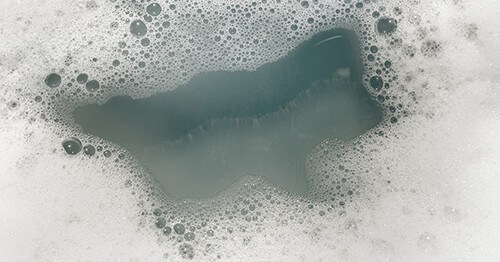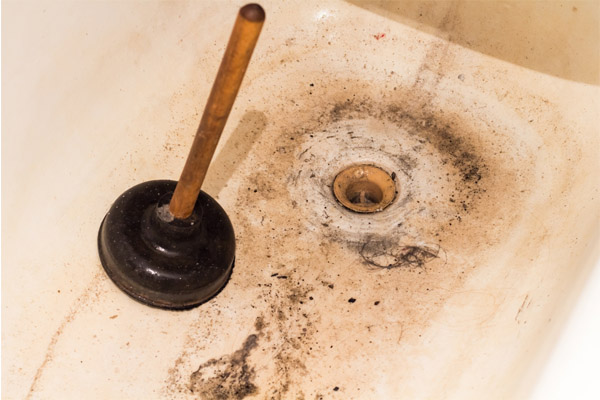How do you really feel on the subject of What To Do If Sewage Starts Backing Up Into the Shower?

Sewer back-up in the bath tub can be an upsetting and unsanitary trouble for any kind of homeowner. Not only is it bothersome, however it additionally poses serious wellness threats and suggests underlying issues with the plumbing system. Recognizing why sewer is coming up with the bathtub is critical for taking appropriate activity to resolve the issue efficiently.
Introduction to the Concern
Typical Reasons for Sewer Backup
Clogs in the Sewage System Line
Among one of the most usual causes of sewage backup is a blockage in the sewage system line. This can occur because of the accumulation of debris, grease, or foreign things in the pipelines, stopping correct circulation and triggering sewer to back up right into your bath tub.
Tree Root Intrusion
Tree roots seeking moisture and nutrients can penetrate sewer lines with small fractures or joints. Over time, these origins can expand and expand, causing significant damages to the pipelines and leading to sewage back-up issues.
Understanding the Issue
When sewage starts backing up right into the tub, it's a clear indication of an issue with the water drainage system. The wastewater that needs to be flowing far from your home is rather locating its back into your home, which can lead to significant damages and carcinogen.
Potential Causes
Numerous variables can add to sewer backup in the bathtub. From clogs in the sewer line to problems with the plumbing infrastructure, recognizing the root cause is essential for finding an option.
Aging Facilities
Older homes might have obsoleted plumbing systems that are much more susceptible to deterioration, splits, and damage. As pipelines age, they end up being a lot more prone to leaks and clogs, increasing the chance of sewer backup events.
Heavy Rainfall or Flooding
During periods of heavy rainfall or flooding, the sewer system might become overloaded with excess water, causing back-ups and overflows. This can cause sewage supporting right into bathtubs and various other components inside the home.
Signs of Sewer Backup
Foul Odors
Undesirable smells rising from drains or fixtures, specifically in the restroom, may suggest sewer backup concerns. These odors are typically strong and persistent, signifying a trouble that calls for prompt focus.
Slow Draining Fixtures
Tubs, sinks, and bathrooms that drain pipes gradually or otherwise whatsoever could be experiencing sewer backup. If numerous fixtures are impacted concurrently, it's likely that the concern originates from a typical factor, such as the main sewer line.
Gurgling Sounds
Odd gurgling or bubbling noises originating from drains when water is running somewhere else in your house are a sign of air trapped in the plumbing system. This air build-up can arise from sewer back-up and need to be examined immediately.
Wellness Dangers Connected With Sewage Backup
Contamination of Water
Sewage backup can pollute the supply of water in your house, posing a significant health threat to you and your family members. Exposure to polluted water can result in gastrointestinal problems, skin infections, and various other illnesses.
Mold Growth
Dampness from sewage back-up can produce perfect problems for mold and mildew growth in your home. Mold and mildew spores can aggravate respiratory system troubles and trigger allergies in sensitive people, making punctual clean-up necessary.
Spread of Illness
Sewage consists of dangerous bacteria, infections, and bloodsuckers that can create a variety of conditions, including liver disease, cholera, and gastroenteritis. Entering into contact with sewer or contaminated surfaces places you in jeopardy of infection.
Tidying up After Sewer Back-up
Sanitation Procedures
Extensively decontaminate and sanitize impacted locations after sewer backup to remove damaging bacteria and stop mold development. Use proper cleaning items and safety gear to make certain risk-free and reliable cleanup.
Remediation of Impacted Locations
Repair any damages to flooring, wall surfaces, or fixtures caused by sewage back-up. Depending on the extent of the damage, you might need to replace carpeting, drywall, or other products to restore your home to its pre-loss problem.
Immediate Actions to Take
Turning Off Supply Of Water
In case of sewer back-up, it's important to switch off the water system to prevent additional contamination and damages. Situate the primary water shutoff valve in your home and shut it off up until the problem can be solved.
Getting In Touch With an Expert Plumber
Managing sewer backup is not a DIY job. Get in touch with a licensed plumber with experience in handling sewage-related concerns to analyze the scenario and perform needed fixings or clean-ups.
Staying Clear Of Contact with Polluted Water
Till the sewer back-up is settled, prevent contact with infected water to prevent the spread of bacteria and virus. Wear protective gear if you should be in the afflicted area and wash your hands thoroughly later.
Preventive Measures
Routine Upkeep of Sewage System Lines
Arrange regular examinations and maintenance of your drain lines to identify and attend to possible problems before they escalate into significant issues. This can consist of clearing out particles, inspecting for tree origin breach, and fixing any type of damaged pipes.
Setting Up Backwater Shutoffs
Consider installing backwater shutoffs in your plumbing system to stop sewage from flowing back into your home during durations of heavy rainfall or flooding. These shutoffs automatically close when water starts backing up, shielding your residential property from contamination.
Proper Disposal of Home Waste
Prevent flushing anything aside from toilet tissue and human waste down the toilet to avoid obstructions and clogs in the drain line. Dispose of oil, oil, and other family chemicals properly to lessen the risk of plumbing issues.
What To Do If Sewage Starts Coming Up Through Your Bathtub
Sewage coming up through your bathtub is more than just gross. It poses a major health risk as sewage contains harmful bacteria and microorganisms that can be dangerous if exposed to them. While your tub or shower will certainly need a deep cleaning when this occurs, you’ll first need to get to the root of the issue.
If you notice sewage coming up through your bathtub, research Cherry Hill, NJ, licensed plumbers right away to get it fixed.
Why Sewage Is Coming Up Through Your Bathtub
The most common reason for sewage coming up through your bathtub is a clogged sewer line. All the sinks, toilets, and tubs connect to a single drain pipe that leads to the sewer line under your house. This drain line carries all wastewater and sewage away from your home to the city’s sewer system.
When the sewer line becomes clogged or blocked, wastewater has nowhere to go but back toward your house. This results in sewage coming up through your drains, often starting with your tub or shower.
The sewer line can become blocked by anything, but the most common culprits include:
Hair ? Cooking oils and grease ? Food waste ? Soap particles ? Children’s toys ? Jewelry ? Baby wipes or other non-flushable items ? Dirt ? Rocks ? Tree branches and debris ? Rodents How To Fix A Clogged Sewer Line
When you experience sewage coming up through your bathtub, it’s always best to contact a professional. Attempts to fix a clogged sewer line without experience often lead to more plumbing damage. However, you can try a few things that may loosen blockages in smaller connecting pipes.
Don’t Use A Plunger
Plungers only work to loosen obstructions near the head of the drain or toilet. It won’t be able to reach your sewer line or unclog the blockage.
Turn Off The Water
Turning the water off from the main valve will prevent excess water from flowing into already backed-up areas. This will also keep more sewage from coming up through your drains.
Check Your Vent Pipe
When vent pipes become clogged or blocked, it can lead to problems with the sewer line. By pulling any obstructions out of the pipe, your sewer line should be able to properly drain. The vent pipe can be located on your roof, usually directly over your bathroom.
Snake The Shower Drain And Toilet
Using a drain snake can help break up the object causing a blockage. By snaking both the shower drain and the toilet, you may be able to fix the issue. You’ll know you’re successful if the tub drains all sewage and wastewater.
Call A Professional
If these tactics don’t work, you will need to call a professional plumber. They will perform a camera sewer line inspection to find the source of the blockage and determine the best way to remove it. A professional will use a drain snake or conduct hydro jetting to unblock the sewer line and get things back in working condition.
If the obstacle blocking your drain line has caused any damage, you may also need your pipes repaired or even replaced.
Gurgling While Draining
Listen for gurgling sounds coming from the shower drain or sink, as this is an early warning sign of a clogged sewer line.
Frequent Clogs
If your toilet or other drains continuously become clogged, you need to call a professional to look at it. While you may be able to get the water or waste to drain again, it may only be a temporary fix.

We hope you enjoyed reading our article about Why is Sewage Backing Up Into My Bathtub?. Thanks for finding the time to browse our piece of content. Do you know somebody who is enthusiastic about the niche? Please feel free to promote it. Thank-you for going through it.
This Website